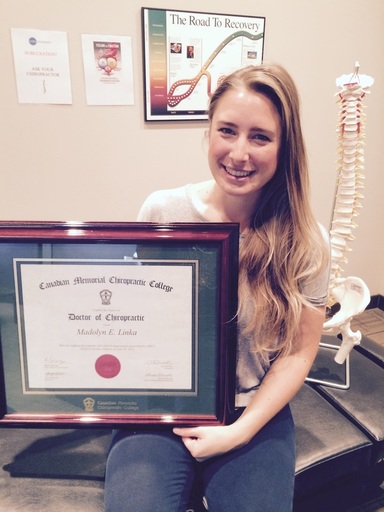 There has never been a more interesting time in the world of taking pictures of babies developing brains. "A study using brain images from “quiet” MRI machines adds to the growing body of evidence that breastfeeding improves brain development in infants. Breastfeeding alone produced better brain development than a combination of breastfeeding and formula, which produced better development than formula alone." Pretty fascinating research article that has hard cold facts about the benefits of what your child eats has an impact on their brain development through the primitive years of life. Support for the developing brain Above are the MRI images, which showed that infants who were exclusively breastfed for at least three months had enhanced development in key parts of the brain compared to children who were fed formula or a combination of formula and breastmilk. Images show development of myelization by age 6 months, 12 months, 18 months, left to right. A total of 133 babies ranging in ages from 10 months to four years were included in the study. All of the babies had normal gestation times, and all came from families with similar socioeconomic statuses. The researchers split the babies into three groups: those whose mothers reported they exclusively breastfed for at least three months, those fed a combination of breastmilk and formula, and those fed formula alone. The researchers compared the older kids to the younger kids to establish growth trajectories in white matter for each group. The MRI technique specifically looked at the microstructure of the brain’s white matter in the cerebral cortex housing long nerve fibers and helps different parts of the brain communicate with each other. Specifically, the technique looks for amount of myelin development in youngsters. Changes “almost right off the bat” Mean myelin content — the fatty material that insulates nerve fibers and speeds electrical signals — rises with breastfeeding. The changes to developing brains happen early, almost from the start. "The study showed that the exclusively breastfed group had the fastest growth in myelinated white matter of the three groups, with the increase in white matter volume becoming substantial by age 2. The group fed both breastmilk and formula had more growth than the exclusively formula-fed group, but less than the breastmilk-only group." Extra growth was most pronounced in parts of the brain associated with language, emotional function, and cognition, the research showed. "The study also looked at the effects of the duration of breastfeeding. The researchers compared babies who were breastfed for more than a year with those breastfed less than a year, and found significantly enhanced brain growth in the babies who were breastfed longer — especially in areas of the brain dealing with motor function." . Links: https://news.brown.edu/articles/2013/06/breastfeeding http://www.sciencedirect.com/science/article/pii/S1053811913005922
0 Comments
 "Dietary calcium and/or supplements have little effect on bone density in regards to increase fracture occurrence". This is awesome news because it means the body regulates the calcium you get to protect you from frail bones and potential fractures but padding down the matrix of your bones over years and years. The British Medical Journal (BMJ) articles concludes that, "Increasing calcium intake from dietary sources or by taking calcium supplements produces small non- progressive increases in bone mineral density, which are unlikely to lead to a clinically significant reduction in risk of fracture." And "Dietary calcium intake is not associated with risk of fracture, and there is no clinical trial evidence that increasing calcium intake from dietary sources prevents fractures. Evidence that calcium supplements prevent fractures is weak and inconsistent." So if you have a "normal diet, you don’t need to worry about your calcium intake.”? What makes up a normal diet to make sure you have at least the requirements for calcium?... Dairy, we're told over and over again is a good source, but incorporating some dark leafy vegetables that are dense in calcium can be a good way to variety. Some dark leafy green you can throw into some meals this week: collards, kale, parsley, spinach, beet leaves, & swiss chard. The other major part of healthy bone density is exercise, specifically weight training. Creating time for at least 1-2 weight-based workouts a week could substantially increase your bone mineral density due to the tug and contractile forces that muscles have on bony attachments. All in all, exercise is a great way to maintain good and healthy bones! YUP, based on research by Bruce Lipton, PhD your environment plays a 98% role in your health outcomes. His theories state that genetics has little to do with the overall state of your health, but neurochemistry rules how well you feel and how well your thrive. The hidden secret is in the subconscious mind - i.e. swapping our negative thought patterns for good ones creates new and boundless internal brain chemistry that makes healing and health possible. In his landmark experiment Dr. Lipton showed that identical stems cells behaved differently based on their petri-dish's chemical environment; some would become muscle tissue, others bone dense tissue, yet they all had the same preliminary genetic make up. Expanding this idea to the human body and its 50 trillion cells since the brain is the hard drive computing mechanism it makes everything we do on a daily basis, possible. Within our brain we have many anatomical (seeable things), we also have things we don't see, such as the traits, personality, moods, likes vs. dislikes and the subconscious mind. Dr. Lipton states that with continuous (unconscious) positive thought, yields a favourable chemical environment leading to healing, prosperity and overall a better sense of wellness. The exact opposite is true when burdened with negative thoughts, neuro-based biochemicals flood the system with messages of disease and unease shutting down proper immune functioning. Therefore, since most of our thoughts are unconscious and deeply rooted in our early childhood experience, we are constantly depending on our brain to think "good" or think "bad", all by itself. Here is an exert from Carolanne Wright's article: "Up until age 6, every person is like a sponge, absorbing information, traits, behavioral responses as well as conditioning from family and society. According to Lipton, from birth until 6, there is very little conscious thought. We are simply soaking up everything around us which in turn shapes the way we think. Unfortunately, most of us take in beliefs based on negative thinking, a sense of lack and competition. As adults, these negative programs not only manifest as ill health, but also financial hardship, mental unease and other life challenges." BUT... There is HOPE! We can slowly reprogram these very fundamental parts of who we are and how we think about our environment within the subconscious. Tuning into the pre-programmed habits is a popular subject in today's health and wellness society called... you guessed it... MINDFULNESS. Once we can identify patterns in our thoughts by being/sitting still, seeing what comes up and allowing those thoughts to have less meaning, it's possible to change the chemical cascades from a "bad" association to a "good" association. This is no one "quick" fix solution and a life of mindfulness takes time and dedication to fulfill, but it is accessible to everyone. Perhaps opening yourself up to some books on meditative practices, yoga or even just finding 10 minutes a day to sit, be still and breathe fully and deeply can help "undo" some negative patterning and create new and vibrant paths in your subconscious. Based on Carolanne Wright's article: http://wakeup-world.com/2013/05/18/genetics-have-little-influence-over-health/ Sources: http://tv.greenmedinfo.com/the-genes-dont-control-life-the-new-biology-with-bruce-lipton/ Victoria, Vancouver Island. British Columbia.
Hello WORLD! Today is a day dedicated to creating a world awareness about the prevention and effective management of spinal conditions. During my time at CMCC, I was part of the World Spine Care council and helped to effectively execute a 'Yoga-thon' on World Spine Day 2014. Our goal was to get people moving and more conscious about how a healthy spine through yoga, movement and breath! It was fun teaching a bunch of yoga classes during the day at out school, creating change one breath at a time.
World Spine Care (WSC), which spearheads World Spine Day, is a multinational not-for-profit, charitable organization founded in 2008 by Scott Haldeman MD, PhD, DC, a leading figure in the assessment and treatment of spinal conditions. It was launched to fill the gap in the evidence-based treatment of musculoskeletal and especially spinal conditions found in underserviced areas around the world such as Eastern Africa, India and the Dominican Republic. A few classmates of mine had the opportunity to go down and work for two weeks at the newly opened Moca clinics in the Dominican and got awesome experience treating in the communities there. A recent World Health Organization Global Burden of Disease report was published in Lancet in December 2012 (Murray et al, Vos et al, 2012). In this report, the following information regarding spinal conditions was reported:
For more information on World Spine Day and World Spine Care click on the links below: http://www.worldspinecare.org http://www.worldspineday.org Go ahead and download the ‘Straighten Up’ App to learn more about creating health and incorporating chiropractic into your life!
|




